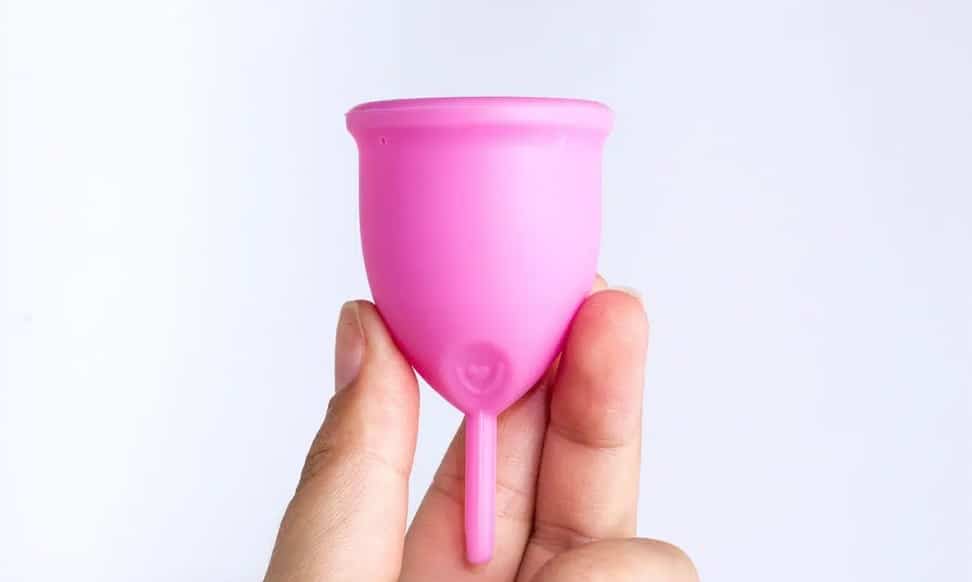Do you already use or have you considered using a menstrual cup? Check out everything you need to know about this option for collecting your period.
No more pads. At least for many women. This is because the menstrual collector comes as new option to collect menstrual blood in a much more hygienic and sustainable way. And despite having become popular recently, this invention has existed for more than 7o years.
The menstrual cup is nothing more than a malleable silicone cup that is used to store menstruation for later disposal.. It is inserted inside the vagina, and although it may cause some strangeness in many women, it offers more security for women on these days. In fact, there are different sizes and brands of collector, and therefore some different ways of placing them.
However, those who use it guarantee that the accessory is very comfortable and full of advantages.. In addition to replacing traditional absorbents, it is much more practical. This is because it has a longer lifespan and can be reused, avoiding the disposal of absorbents in the environment and has a greater storage capacity. It also offers much more freedom for women, who can do different activities without fear of leaking blood.
But despite this, Many people are still afraid of the menstrual cup, the way it looks on the body, whether or not it can cause problems for the user and so on. To help resolve all these doubts and break down all prejudice about menstrual cups, Women’s Area provides answers to some questions about menstrual cups.
Take the opportunity to understand if women’s intimate perfume is harmful.
Main questions about the menstrual cup
1. How is the menstrual cup used?
This is the main question for all women who are curious about using a menstrual cup. Installing it is not as difficult as it may seem. Firstly you will bend the edge of the collector as you insert it into the vagina towards the anus, just like the tampon. This creates an internal vacuum that will help fix and seal the collector.
The ideal is to find a suitable position to place it in and be more comfortable, for example, lying down, sitting, squatting or with one foot supported. Also, the first few times, it may be interesting to use a little water-based lubricant to place the cup. Finally, if the fit is correct, it makes a noise and opens.
2. How to choose the right size?
Did you see how easy it is to place the collector, now the question is what size is appropriate. So, basically there are two sizes of collector on the market. Being the first indicated for women who have already had children and the second for those who have not had a birth. Therefore, look on the packaging for the specification that fits your case.
3. Who cannot use a menstrual cup?
But after all, is there any specificity that prevents women from using the collector? No, the collector can be used by any woman. However, in the case of virgin women, there is a risk of breaking the hymen as the cup is inserted into the vagina. Furthermore, in cases of anatomical changes, such as vaginal septa or changes in the cervix, it may result in discomfort or even pain when placing the cup.
4. How often does it need to be emptied?
Another pertinent question. Then, To maintain hygiene and safety when using the collector, the recommendation is to remove, empty and sanitize every 6 to 12 hours. The exact time depends on the intensity of each woman’s flow, which may be more or less. For example, women with light flow can spend more hours using the collector.
5. Why does the collector leak?
Leakage can be common in women who have very heavy flow due to incompatibility with the cup size.. Therefore, the recommendation is to test at home, to avoid this type of occurrence. Furthermore, a tip to prevent leaks from occurring is to remove it with less time the first few times to understand the ideal frequency for your case.
6. And how to clean the menstrual cup?
Very simple. To keep your menstrual cup clean during use, simply wash it with mild soap and water.. You can do this with a sponge in the sink or even in the shower while you shower. After the menstrual period, to store it for use the following month, it is recommended to boil it. Remembering that cleaning the collector is essential to avoid possible infections.
7. Will I smell strong?
Not exactly. Just like in the case of tampons, women notice the smell of menstruation when cleaning themselves. However, As there is no contact between blood and cotton or oxygen, the odor is much less intense in the case of menstrual cups.
8. How long does the menstrual cup usually last?
As previously stated, the collector lasts excellently. To give you an idea, A single cup, if used correctly and sanitized properly, can last 5 to 10 years. In other words, it ends up being a way of saving money, as it avoids having to buy pads every month, in addition to not affecting the environment, as it avoids the disposal of many pads.
9. Could it be related to the menstrual cup?
Power can, but is not recommended, at least penetration. This because during penetration the cup can be pushed deep into the vagina and it can be an uncomfortable sensation. Furthermore, the rod to remove the accessory, even though it is malleable, may end up bothering your partner. However, for oral sex it can work very well, as it does not leak (when placed correctly).
10. Can you swim in a pool?
Yes, this is one of the main advantages of the collector cup, the freedom to do different activities without fear. Never again postpone things like working out, swimming, running because of your period. But be careful, in the case of more intense flow, the recommendation is to look for lower impact activities, but swimming in the pool is more than okay.
11. Is it normal to feel the tip of the menstrual cup?
It generally depends, for women who are already used to the cup, it doesn’t hurt or cause discomfort. However, In the first three cycles using the collector, still in the adaptation phase, some women may feel the collector causing some discomfort.
12. Is it normal to feel cramps with the menstrual cup?
Colic does not depend on the use of a collector or absorbent, for example. Therefore, the cup does not cause or interfere with colic, which is one of the symptoms of menstruation. But if you are experiencing very intense cramps, the recommendation is to see a gynecologist to evaluate the case.
13. Is it dangerous to use a menstrual cup?
In general, no, as the menstrual cup is very safe and offers low risk.. In fact, the main risk is infections due to lack of hygiene. In other words, using it correctly, removing it at the right time, cleaning it and storing it according to the manufacturer’s recommendations, there is nothing to worry about.
Not case of For women who are allergic to latex or silicone components, it is important to pay attention to the composition of the cup they choose. So, if you feel any irritation or problem in the region due to use, you should see a gynecologist and inform them of the problem and show them the collector.
14. Can I get sick because of the menstrual cup?
In the case of candidiasis, if the woman is predisposed and does not clean the menstrual cup correctly, the problem may appear or worsen. But this is because the fungi that cause it love humidity and heat and would also be activated in other situations, such as in the case of a woman who spends a lot of time in a wet bikini, for example.
15. What happens if you forget to take out your menstrual cup?
It’s not impossible to happen, but it’s not ideal. If the accessory remains on the body for longer than recommended, firstly, it can result in leaks, but in addition, it increases the risk of the proliferation of bacteria that can cause infections.
16. What is the price of a menstrual cup?
Anyway, now that you’ve resolved your doubts about the cup and want to try it, know that You can find menstrual cups from various brands, with prices ranging between R$70.00 and R$150.00. In fact, depending on the collector, a kit with two units may come. Although it may seem like a considerable price, remember that it will last a long time and in the long run it will be cheaper than traditional pads.
READ MORE:
Discover period-proof panties
15 possible folds of the menstrual cup for you to choose from
How to use a menstrual cup in 12 simple steps
7 tips on how to use the menstrual disc and its benefits
Tampon risks: doubts, precautions and dangers
7 types of absorbent and how to use each one
Source: Drauzio Live Well My Life Correio Brasiliense

Sign up for our newsletter and stay up to date with exclusive news
that can transform your routine!
Warning: Undefined array key "title" in /home/storelat/public_html/wp-content/plugins/link-whisper-premium/templates/frontend/related-posts.php on line 12
Warning: Undefined array key "title_tag" in /home/storelat/public_html/wp-content/plugins/link-whisper-premium/templates/frontend/related-posts.php on line 13




